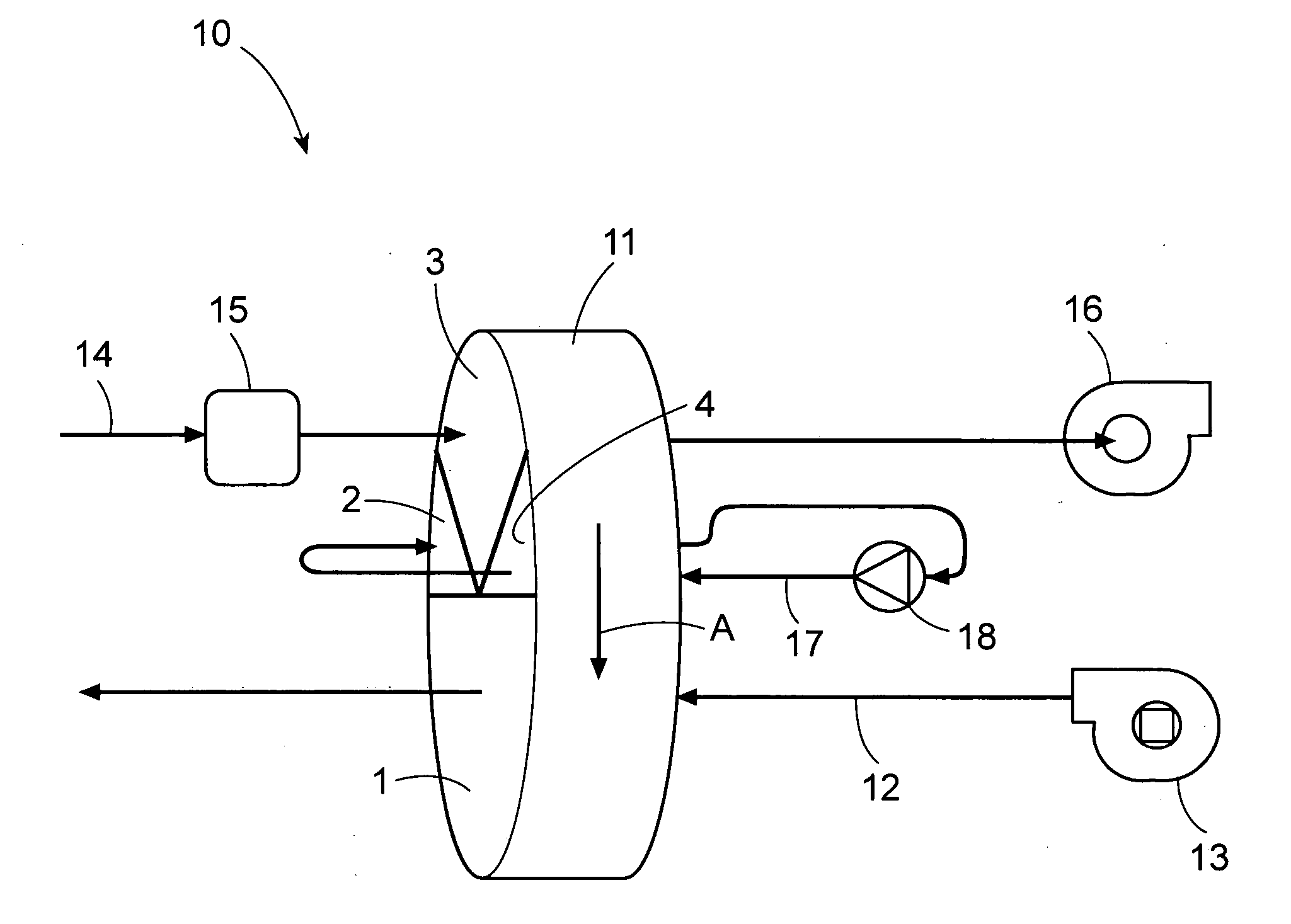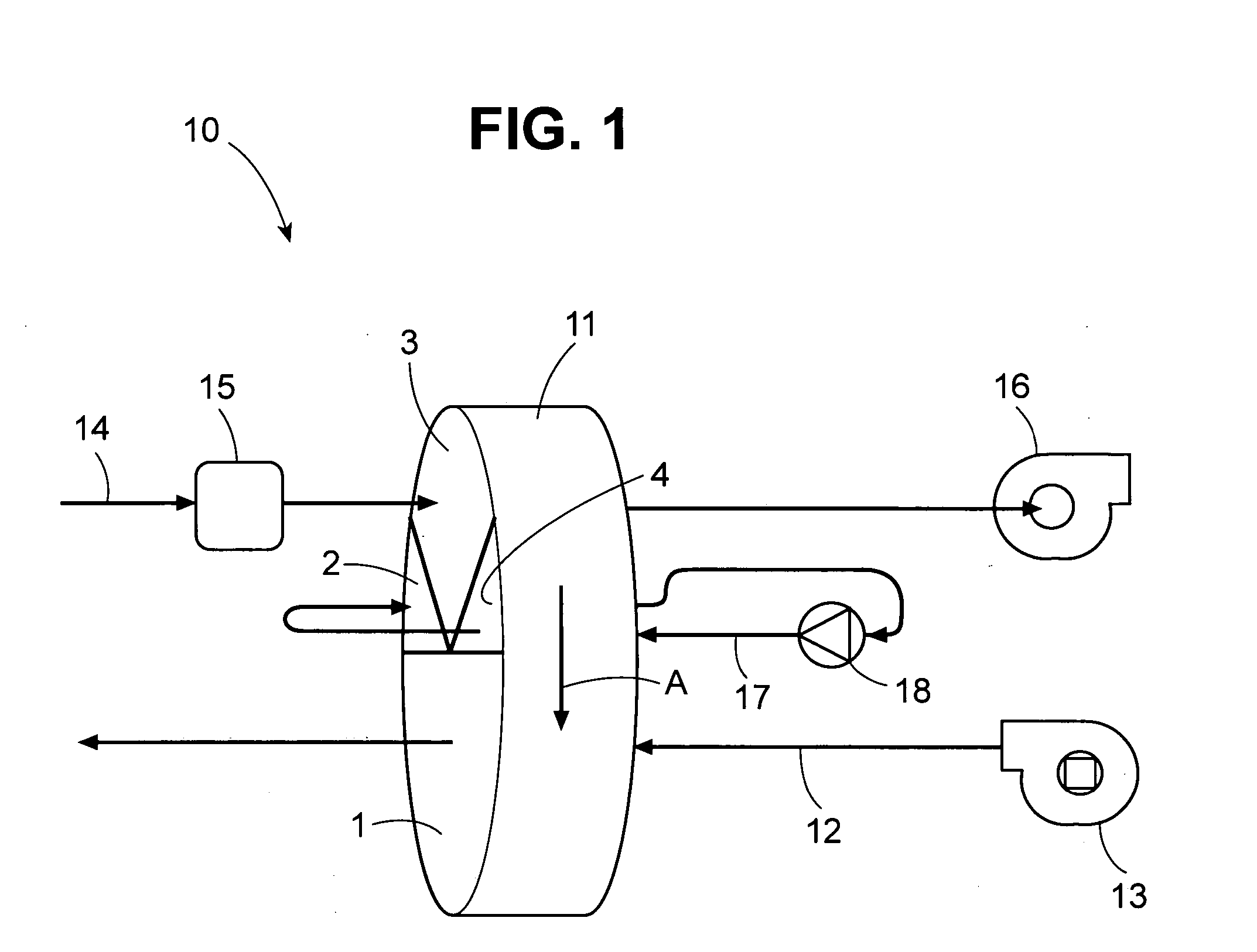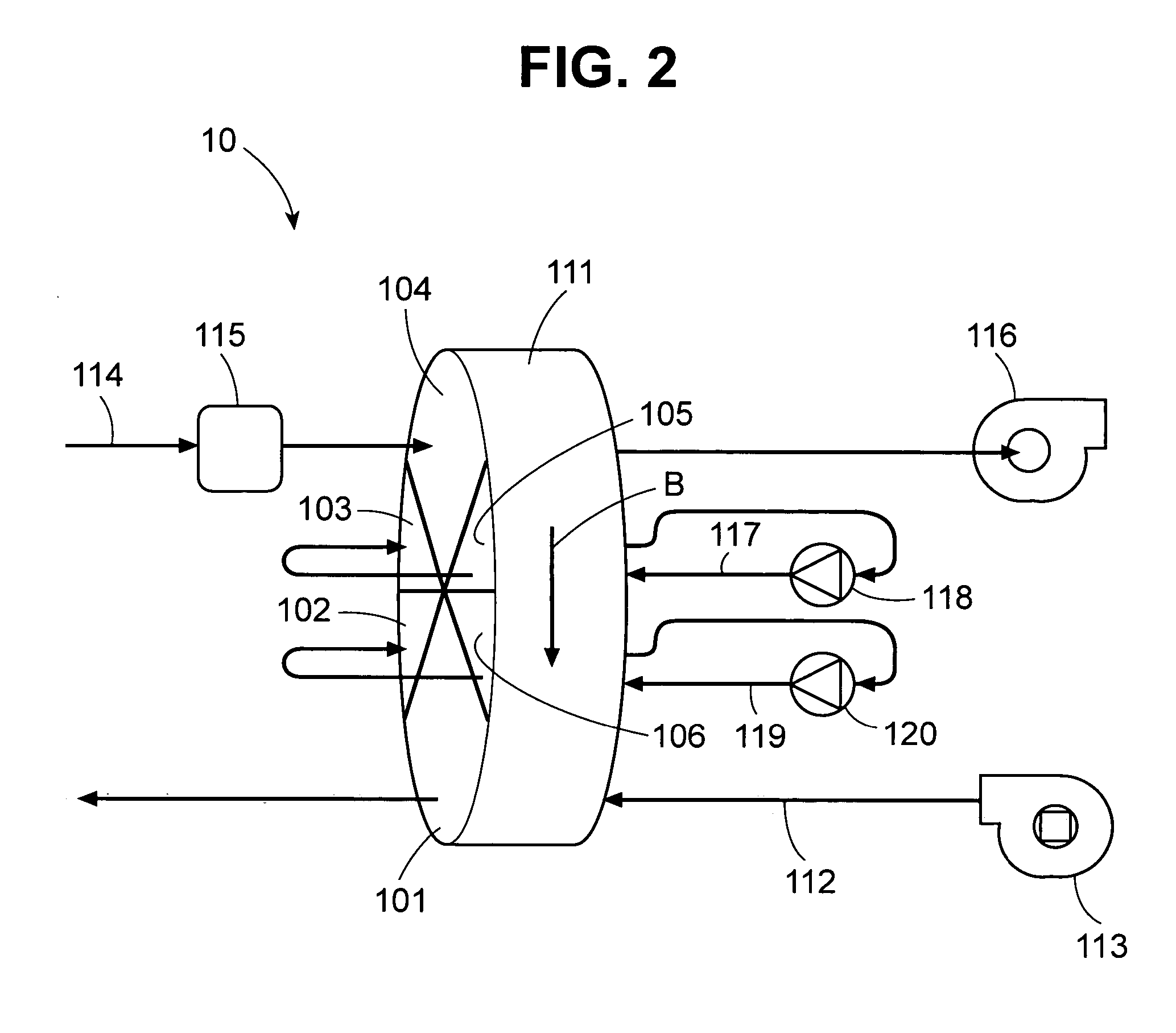Rotary bed sorption system including at least one recycled isolation loop, and methods of designing and operating such a system
a technology of sorption system and rotary bed, which is applied in the direction of heating type, lighting and heating apparatus, separation process, etc., can solve the problems of no prior art teaching of the use of one or more zones, and the concentration of vapor being removed is affected, so as to reduce cross-contamination
- Summary
- Abstract
- Description
- Claims
- Application Information
AI Technical Summary
Benefits of technology
Problems solved by technology
Method used
Image
Examples
Embodiment Construction
[0039]FIG. 1 illustrates a first preferred embodiment of a rotary sorption bed system 10 in accordance with the present invention. The system includes a rotating disk-shaped porous mass 11 of a conventional construction containing or coated with regenerable sorbent material that, in a cycle of operation, sequentially passes through a first zone 1, a second zone 2, and third zone 3, and a fourth zone 4. The sorbent mass 11 is rotated about its axis in the direction indicated by arrow A by a known rotor mechanism (not shown).
[0040] A process fluid stream 12 carrying a sorbate (e.g., water vapor) is passed through the sorbent mass 11 in the first zone 1, where the sorbate is sorbed (i.e., loaded) onto the sorbent mass 11. The process fluid stream exiting the sorbent mass has a reduced sorbate concentration compared to the process fluid stream entering the sorbent mass. Optionally, a fan, blower, or other fluid-moving device 13 can be used to drive the process fluid flow through duct w...
PUM
| Property | Measurement | Unit |
|---|---|---|
| dew point | aaaaa | aaaaa |
| vapor pressure | aaaaa | aaaaa |
| dew points | aaaaa | aaaaa |
Abstract
Description
Claims
Application Information
 Login to View More
Login to View More - R&D
- Intellectual Property
- Life Sciences
- Materials
- Tech Scout
- Unparalleled Data Quality
- Higher Quality Content
- 60% Fewer Hallucinations
Browse by: Latest US Patents, China's latest patents, Technical Efficacy Thesaurus, Application Domain, Technology Topic, Popular Technical Reports.
© 2025 PatSnap. All rights reserved.Legal|Privacy policy|Modern Slavery Act Transparency Statement|Sitemap|About US| Contact US: help@patsnap.com



